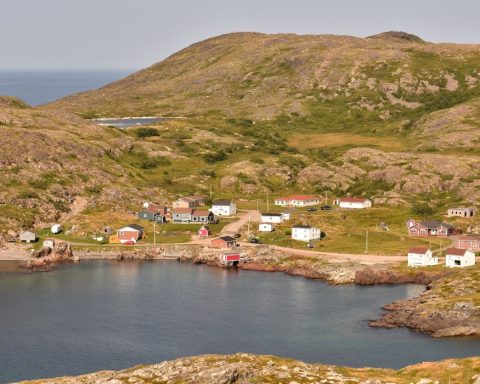Banks are shelling out more than US$500 billion a year to finance the largest contributors to climate change in the Global South, a region that is especially vulnerable to the roiling weather disasters gripping the planet.
That figure is more than 20 times the amount the region received in funding to combat climate change, according to a report released by ActionAid last week.
The report tracks how money flows from some of the biggest banks in Europe, North America and Asia into fossil fuel and industrial agriculture ventures in the 134 countries that comprise the Global South, which spans Africa, Latin America and Asia.
It found that banks have provided an estimated $3.2 trillion (all figures in US dollars) in financing for the worst climate offender, the fossil fuel industry, in the Global South since the Paris Agreement on climate change was enacted in 2016. Over that same period, $370 billion went to the next most greenhouse-gas-intensive sector: industrial agricultural companies, including meat and palm oil giants as well as chemical makers.
Together, that amounts to an average of $513 billion a year – or more than 20 times the $22.5 billion that governments in the Global North directed to countries in the South to combat climate change in 2020.
“The world’s money is flowing in the wrong direction,” Arthur Larok, secretary general at ActionAid International, said in a statement. “This is absurd and must stop.”
Teresa Anderson, the global lead on climate justice at ActionAid and the author of the report, singled out the hypocrisy of banks that publicly commit to climate action but fund projects that work against it, including coal mines, gas wells, oil pipelines and monoculture farming.
“It is communities in Africa, Asia and Latin America who are suffering the impacts of decisions made in distant banking boardrooms,” she said. “By financing fossil fuel and industrial agriculture in the Global South, banks are condemning communities to the cruel combination of landlessness, deforestation, water pollution and climate change.”
In Europe, the largest financiers of fossil fuels and agribusiness are HSBC, BNP Paribas, Société Générale and Barclays. HSBC alone poured $63 billion into fossil fuel projects in the Global South and more than $17 billion into Big Ag. In the Americas, the sectors’ biggest funders are Citigroup, JPMorgan Chase and Bank of America, with Citigroup investing $90 billion into fossil fuels. The largest funder overall was out of Asia, the Industrial and Commercial Bank of China, investing a whopping $146 billion to fossil fuel companies.
“Recent research has shown that only seven percent of the financing provided by the major international banks featured in our report has gone to renewable energy in the seven years since the Paris Agreement,” the report noted.
No similar dataset is available for the financing of sustainable agricultural projects, but the report provides ample examples of the two faces of the financial services industry.
For example, banks – including Barclays, BNP Paribas, HSBC and Citigroup – that have vowed to stop lending to coal producers in the long term continue to do so in the interim. None of the banks has a policy to fully phase out oil and gas financing, even though the report says “it’s required” if their financing is to be consistent with the goal to keep global warming at 1.5°C. They are virtually silent on limiting the financing of industrial agriculture: if a policy exists, it typically relies on certification schemes that have proven flawed, the report notes.
Indeed, while we should all be well versed in the need to dramatically curb our use of fossil fuels, which account for more than 75% of global greenhouse gas emissions, industrial agriculture often falls under the radar.
But it is the second-largest contributor of greenhouse gases. According to the Intergovernmental Panel on Climate Change, agriculture, forestry and other land– use sectors produce 13 to 21% of global greenhouse gas emissions.
Industrialized agriculture usually involves monoculture plantations that gobble up massive amounts of land and rely on greenhouse-gas-intensive synthetic fertilizers to produce commodities for export. These plantations are responsible for aggressive deforestation and destruction of biodiversity. In Brazil, for example, the beef industry and soy fields that are used to grow animal feed are the main drivers of deforestation in the Amazon and Cerrado regions. Emissions from livestock manure and enteric fermentation, along with methane emissions from rice paddies, are the other main sources of greenhouse gases in agriculture.
Bayer, the German multinational that bought the controversial agrochemical and biotechnology company Monsanto, received the most amount of financing from the banks highlighted in the report, to the tune of $20.6 billion, for its agribusiness operations in the Global South since 2016.
“In this urgent era of climate change, public funds must be scaled up and channeled in the public interest, to bring about equitable transitions to renewable energy and agroecology,” the ActionAid report notes. “And the madness of the world’s banks and governments continuing to finance the destruction of the planet must come to an end.”





